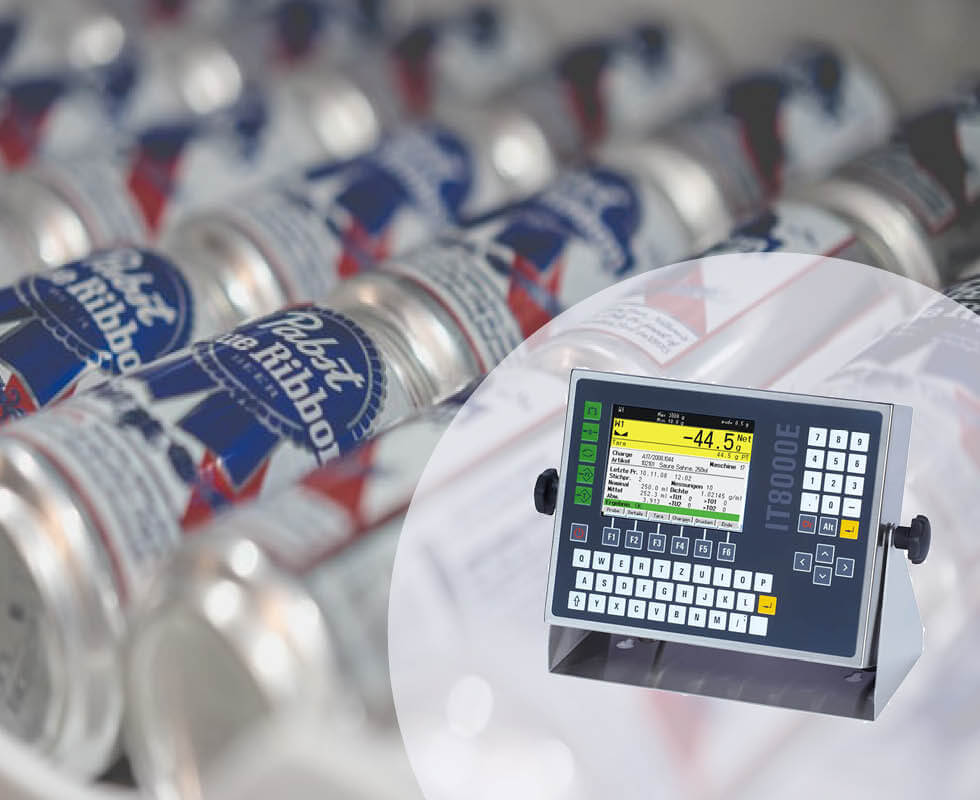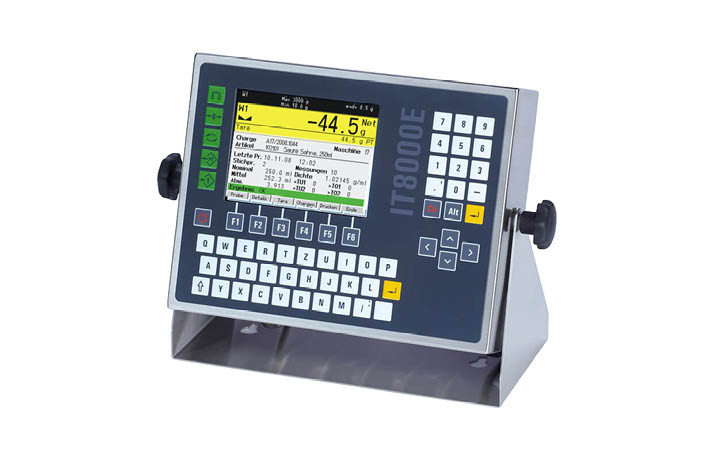SQC - statistical quality control
Every day, millions of prepackages are filled and checked before they are finally available to consumers in supermarkets or via online retailers. Whether detergent cartons, cans, bottles or paint buckets - the net weight or volume must be indicated on all prepackages. To protect the consumer, the permissible level of underfilling is regulated by law. Therefore, fill quantity control and statistical process control are essential.
SysTec weight indicators have been successfully used in statistical quality control (SQC) checkweigher applications worldwide for over 25 years. A particularly efficient way to handle SQC is the employment of the ready-to-use SQC E software, constantly maintained and enhanced by SysTec.
From the very beginning, SysTec shareholder Klaus Bernards has accompanied the application development as Product Manager and, until recently, passed on his knowledge to customers in training courses. In the interview, he highlights essential elements of the SQC application.
SQC interview with Klaus Bernards
What are the benefits of statistical quality control when filling prepackages?
The benefits for filling operations or manufacturers clearly are cost savings from avoiding overfilling. And, of course, the avoidance of fines due to possible underfilling of prepackages. To protect the consumer, legislation requires in the Regulations for Prepacked Goods that the average fill quantity must not fall below the nominal fill quantity and that underfilling is only permitted up to a maximum deviation. Underfilling beyond this limit may only occur with a very small proportion of test items, or not at all.
Our SQC weighing systems are a well-proven solution. They offer evaluation in accordance with many European regulations, such as Pharmacopoeia (EU), the German FPackV or the Austrian FVPO. In addition, freely adjustable limits are possible. This is especially interesting for the international market.
To avoid underfilling, wouldn't a complete check be preferable to a statistical check?
Yes, sure, but then every filling line would have to be equipped with a dynamic checkweigher that can keep up with the high throughput of today's filling lines. That is a high investment. As an alternative, the legislator therefore permits filling quantity checks to be carried out in random samples of suitable size on a W&M approved static scale. The advantage is clearly the lower investment, especially since one checkweigher can also be used for multiple filling lines. However, in the case of random sample checks, the operator is obliged to remove the entire batch from circulation if the random sample result does not comply with the legal requirements. The operator of the filling line must therefore weigh up the high investment costs of a full inspection against the possible loss of an entire batch during the random inspection.
So you can say: statistical filling control is particularly recommendable for filling situations where multiple filling lines are to be monitored with a manageable investment and a limited risk of losing a complete batch.
What are the test methods for statistical quality control?
There are three test methods. The first is individual testing: the individual test objects of the sample are placed on the scale one after the other, recorded and then removed again. The second method is additive testing: Here, the individual test objects of the sample are placed on the scale one after the other and remain there until the end of the test. This has the advantage that a single test object is not accidentally recorded twice and another one is not recorded at all. In each case the weight of the test object is the difference from the previously recorded weight. And the third test method is the two-stage test: The test object is placed on the scale and the weight is recorded. Then the contents of the test item are emptied and the weight of the empty container is taken. The registered weight is the difference between the first and second weighing. That's why this is called a 'destructive test'.
What makes SysTec's SQC application software so special?
Our solution is fast, user-friendly, absolutely precise and reliable. The powerful SQC software, in conjunction with our IT6000E and IT8000E series of weight indicators and controllers, covers the entire range of statistical quality and process control. In addition to checking by weight or volume with general, average or individual tare, other inspection characteristics can also be recorded. Characteristics that have nothing to do with the prepackaging regulations but are nevertheless important to the manufacturer in the context of his own quality claims, such as the clear legibility of the best-before date or -for instance- the tightness of the bottle cap.
In addition to the W&M approval, the speed of the test procedure is an important factor: unnecessary keystrokes are avoided - the actual test procedure even takes place without any keystrokes and only by placing the test object onto the scale. The high weight value resolution of 10,000 d and, in the case of digital scales, up to 32,000 d is also a plus.
In addition, our product offers extensive options for data logging of sample and/or batch results, on printer, in file -e.g. on USB stick- or directly via data transmission to the EDP system, each record with mean value, standard deviation, number of weighings, just to name a few points.
Catch word 'data transmission to EDP': what about the connection to PC-based databases?
The communication works via serial interface or via Ethernet. On the computer, our program PC ReadIT can then be used. It receives the data from the weighing system and then saves it in a file or in the database available on site.
Alternatively, however, with our PC SQC, we also offer a solution that provides centralized management of product data in addition to the recording of sample results and/or batch results. An advantage is that several weight indicators with SQC program can be connected to PC SQC and thus an evaluation can be carried out across several test stations. In addition, we offer a connection to many common databases (e.g. Oracle, SQL). PC SQC consists of a service for communication with the check stations and an operating program for evaluation and data maintenance. The operating program can be installed on several computers in the network.
What about security?
Of course all data are stored in a power-fail-safe way. Even the data transfer to the EDP is routed through a buffer file: If the computer is not online, the data are buffered until the transfer has been successfully completed, even if the weight indicator was switched off in the meantime.
Recently, a new version of the SQC software was released. What are the main new features and their benefits?
In addition to several minor improvements and enhancements, it is now possible to choose between two different formats for logging to file: the csv format for direct import into an Excel file and prn as alternative format. Here, data are formatted for output to printer and can thus be printed directly from the PC without further formatting. In addition, we have now made the length of the article number adjustable. In the past, this was always the subject of customer-specific modifications.
Does that mean that it is also possible to implement customer-specific requirements?
Yes, of course! Thanks to the free programmability of our weight indicators, customer-specific change requests are easy to accommodate. This can either be realized by our application department - or the SysTec partner can do it himself, if he has the appropriate programming tools and programmers with the relevant skills. By the way, the latter can be acquired in our web seminars.


